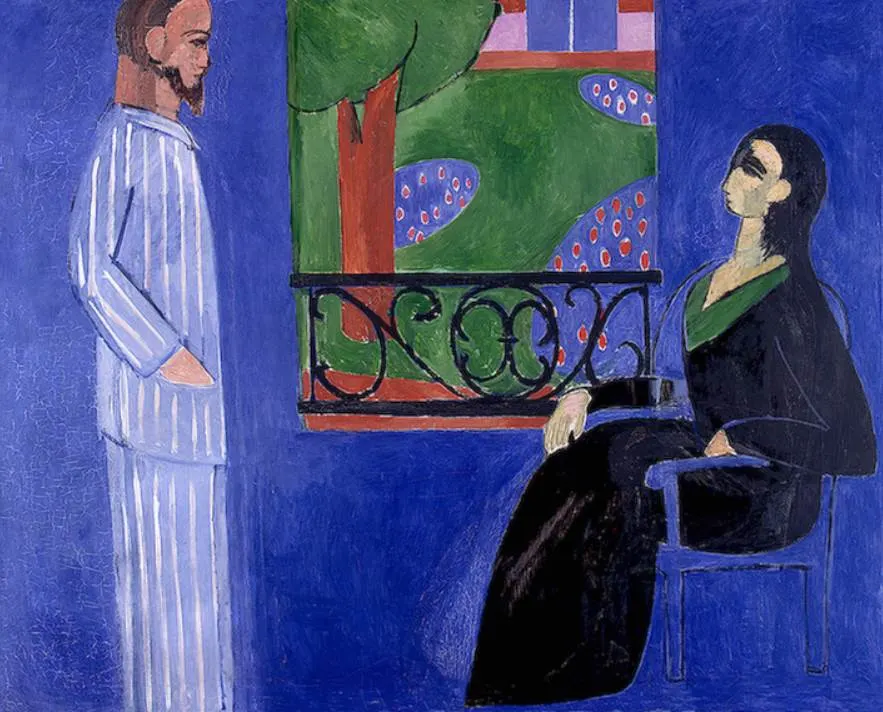Henri Matisse (1869-1954) was one of the most influential French artists in history. Although he is famously known for his colorful paintings, he was also a renowned draughtsman, printmaker, and sculptor.
Many art historians place Matisse at the same level as Pablo Picasso (1881-1973), his contemporary and colleague, albeit over a decade younger.
He was a prominent member of the Fauves, an art movement that transformed the world of art in the early 20th century. Despite only lasting just over a decade, the use of color used by Fauvism artists inspired numerous later generations.
In this article, you’ll discover some of the most famous Henri Matisse paintings, colorful artworks that shaped the world of art that we know today.
1. Le Bonheur de Vivre
- Date created: 1905-1906
- Dimensions: 176.5 × 240.7 centimeters (69.5 × 94.75 inches)
- Location: Barnes Foundation, Philadelphia, United States
Le Bonheur de Vivre is not only one of the most famous Henri Matisse paintings, but it’s also considered to be one of the most important paintings at the start of Modernism. In that sense, it’s comparable with Pablo Picasso’s “Les Demoiselles d’Avignon.”
Despite the important place the work has in the history of art today, it wasn’t received that well at its first exhibition, the Salon des Indépendants of 1906. The remarkable use of colors and the copious number of nude figures were heavily criticized.

2. Woman with a Hat
- Date created: 1905
- Dimensions: 80.65 × 59.69 centimeters (31.75 in × 23.5 inches)
- Location: San Francisco Museum of Modern Art, San Francisco, United States
Woman with a Hat or “La Femme au Chapeau” is another painting that was painted during Matisse’s Fauves period. It depicts the artist’s wife, Amélie, and was exhibited at the Salon d’Automne the year it was completed in 1905.
It’s a typical work in the remarkable style of Les Fauves, the group of artists who used vivid colors and less emphasis on realistic depictions. This painting is considered to be one of the first works in which his early style shifted towards the works that made him world-famous.
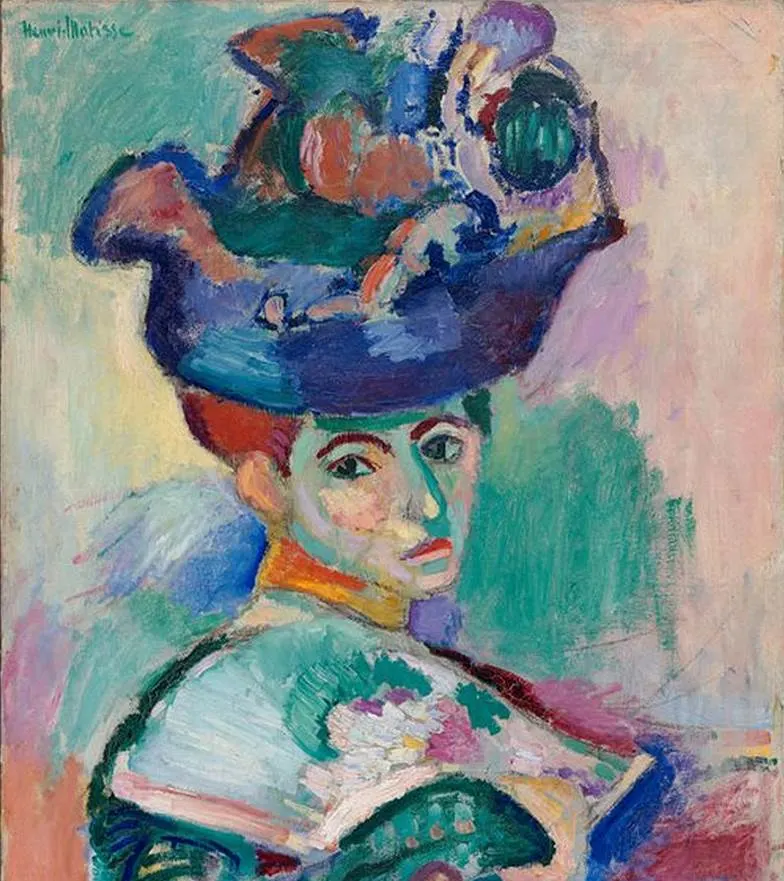
3. Luxe, Calme et Volupté
- Date created: 1904
- Dimensions: 98.5 × 118.5 centimeters (37 × 46 inches)
- Location: Musée d’Orsay, Paris, France
Luxe, Calme et Volupté was produced a year earlier and is widely considered to be the starting point of the Fauves art movement. It can therefore be described as one of the most important Henri Matisse paintings in which he permanently moved away from the ideals of the Post-Impressionist artists.

The painting uses the Divisionist technique, a style in which separate single dots produce the main elements of the painting. When looking at the work from a distance, you can see the forms as if the dots are all interconnected with each other.
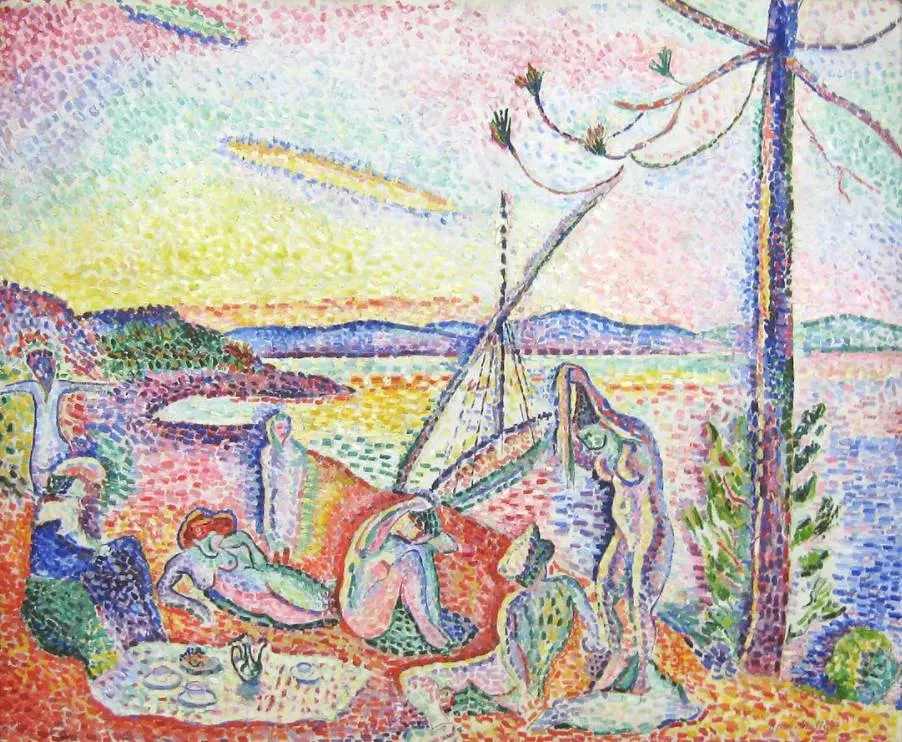
4. The Open Window
- Date created: 1905
- Dimensions: 55.3 × 46 centimeters (21.25 × 18.12 inches)
- Location: National Gallery of Art, Washington D.C., United States
The Open Window is also known as “Open Window, Collioure,” and is yet another work that was exhibited at the Salon d’Automne in Paris in 1905. The painting depicts an open window with a view of sailboats in the town of Collioure on the southern coast of France.
The hotel window from which this painting was produced overlooked the harbor of the small town. Today, the painting is on display at the National Gallery in Washington D.C. after it was bequeathed in 1998 by the wife of John Hay Whitney (1904-1982), the U.S. Ambassador in the United Kingdom.
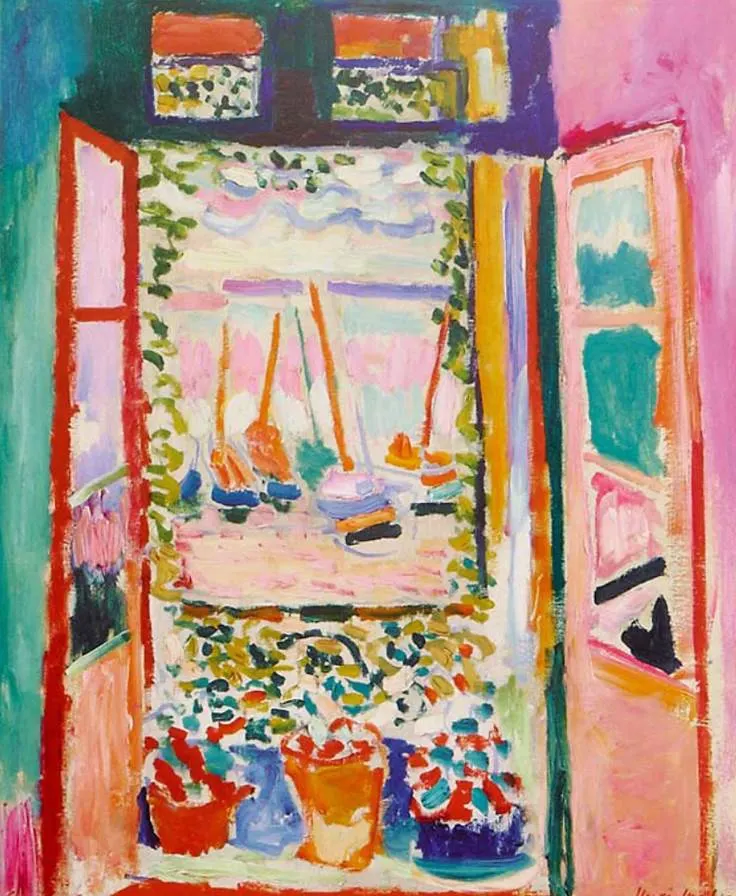
5. Dance
- Date created: 1909
- Dimensions: 259.7 × 390.1 centimeters (102.2 × 153.6 inches)
- Location: Museum of Modern Art, New York City, United States
Dance or “La Danse” is the first version of two paintings with the same subject. They are, therefore, sometimes referred to as Dance I and Dance II. Both works depict a group of naked figures who are dancing in a circle while holding each other’s hands.
These artworks are widely considered to be some of the most influential Henri Matisse paintings. They are also some of the largest works that he ever produced with a width of nearly 4 meters. The second version is much darker and the figures were painted red.
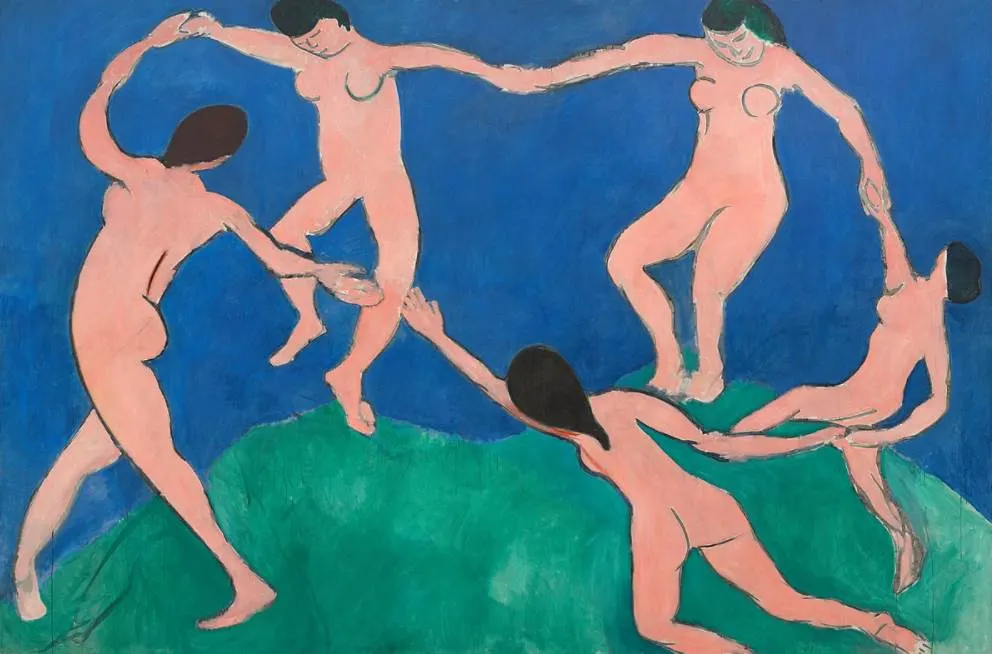
6. The Red Studio
- Date created: 1911
- Dimensions: 162 x 130 centimeters (64 × 51 inches)
- Location: The Museum of Modern Art, New York City, United States
The Red Studio is also known as “L’Atelier Rouge” and is one of the most fascinating paintings in the collection of the Museum of Modern Art in New York City. It depicts the studio that the artist had constructed for himself in 1909 in a remarkable shade of red.
A poll conducted in 2004 listed the painting as the number of 5 of the 500 most influential paintings in the history of art. Not too shabby and one of the main reasons why it has a valuation of about $400 million, reaching 10th place in our list of most expensive paintings in museums.
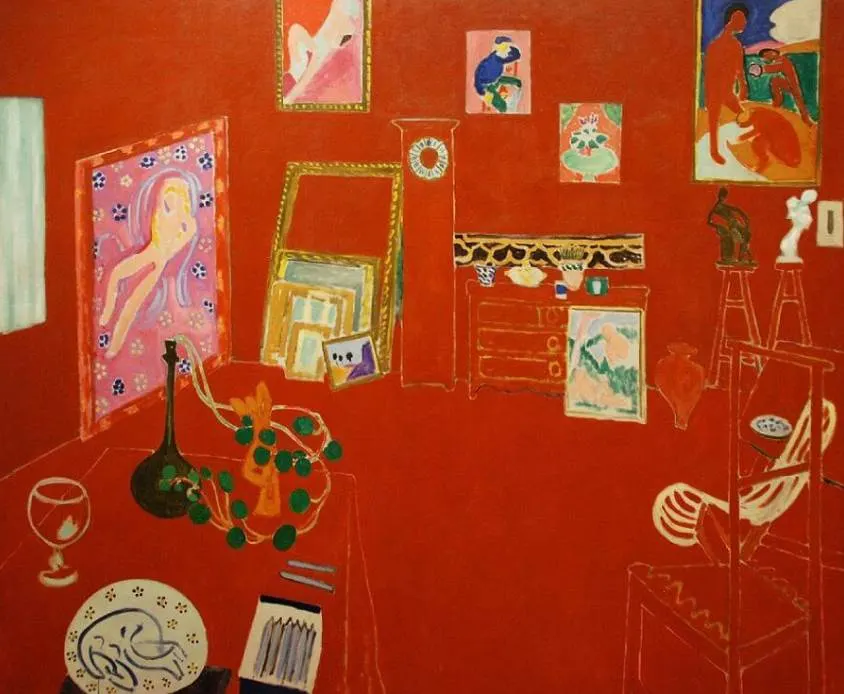
7. The Dessert: Harmony in Red
- Date created: 1908
- Dimensions: 180 × 220 centimeters (70.9 × 86.6 inches)
- Location: Hermitage Museum, Saint Petersburg
The Dessert: Harmony in Red is also known as “The Red Room” and is another painting that features a remarkable red color scheme. It was painted at the height of the Fauves art movement in 1908 and is considered by many to be one of his ultimate masterpieces.
What’s remarkable about this painting is that it was originally referred to as “Harmony in Blue.” Matisse ignored the wishes of the person who commissioned it and overpainted it in red because he didn’t like the original color scheme. This worked out rather nicely as you can see.
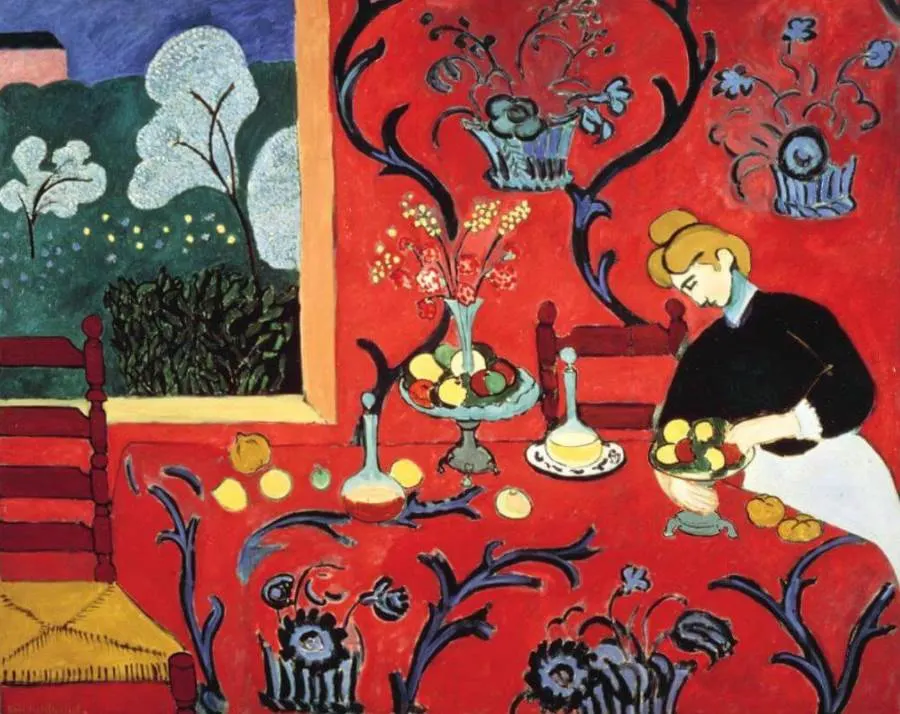
8. The Green Stripe – Portrait of Madame Matisse
- Date created: 1905
- Dimensions: 40.5 × 32.5 centimeters (15.9 × 12.8 inches)
- Location: National Gallery of Denmark, Copenhagen, Denmark
The Green Stripe is commonly referred to as the “Portrait of Madame Matisse” and is one of the multiple Henri Matisse paintings in which his wife Amélie served as the model. The name of the painting refers to the green stripe that the artist included in the middle of his wife’s face.
Just like many other paintings from this period in the early 20th century, the portrait wasn’t appreciated by everybody. The color combination came across as shocking and even his greatest admirers and friends referred to it as a “disturbing image.” It remains one of the most remarkable works in his oeuvre nonetheless.
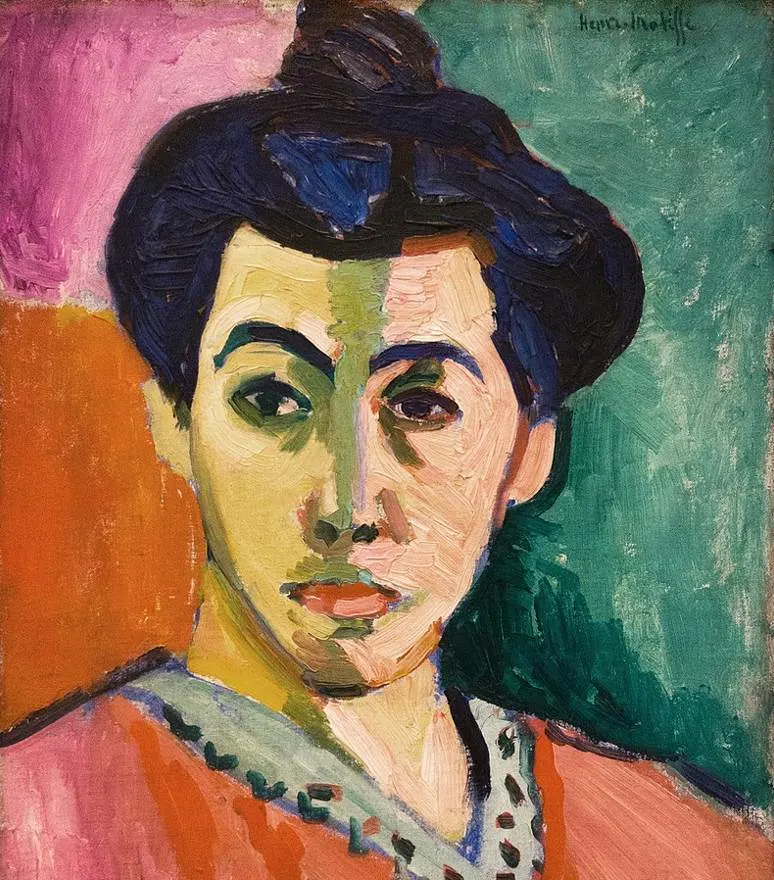
9. Blue Nude
- Date created: 1907
- Dimensions: 92.1 × 140.3 centimeters (36.3 × 55.2 inches)
- Location: Baltimore Museum of Art, Baltimore, United States
Blue Nude, Souvenir of Biskra is a painting that Matisse worked on after one of his sculptures was destroyed. This sculpture was called “Reclining Nude I, Aurore,” and Matisse finished it after completing the painting of the reclining nude.
It was one of the many Henri Matisse paintings that caused quite a stir when it was exhibited, especially at the Salon des Indépendants of 1907 in Paris. It later toured around the United States and the effect was similar here as well. It’s one of the works that inspired his colleagues such as Pablo Picasso and Georges Braque.
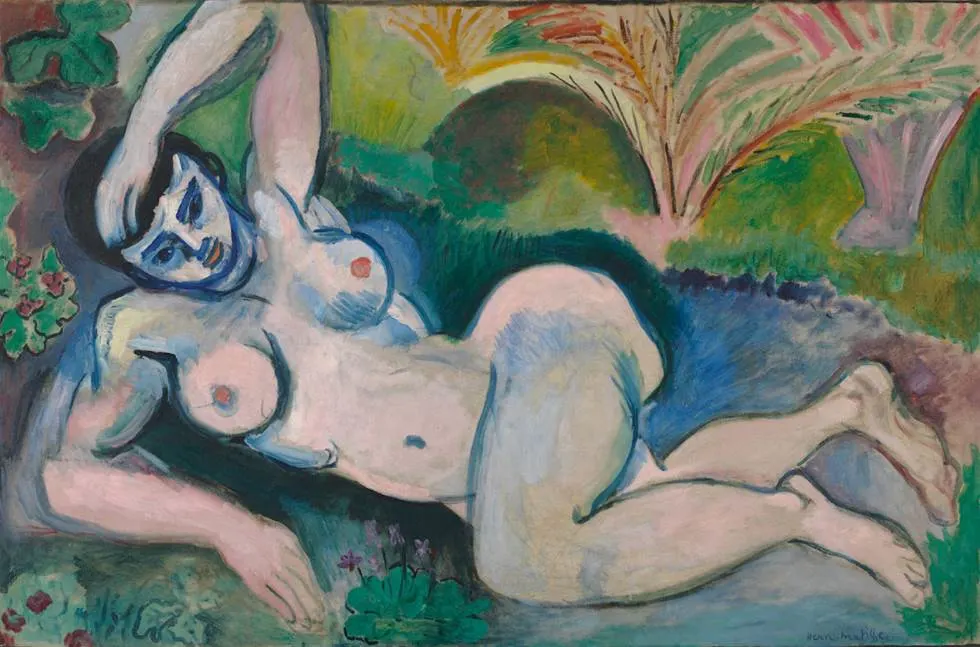
10. The Conversation
- Date created: 1908-1912
- Dimensions: 177 × 217 centimeters (69+5⁄8 in × 85+3⁄8 in)
- Location: Hermitage Museum, Saint Petersburg
The Conversation is another relatively large painting that depicts the artist himself together with his wife Amélie as they are having a conversation inside their room. The overall composition is dominated by the blue color scheme in a similar way to his red paintings.
This work is considered to be one of the paintings in which he transitioned to a more decorative style of painting after his initial period with the Fauves. He limited the unconstrained brushstrokes in favor of flatter ones. This is especially reflected in the striped pajamas worn by the artist.
